
 |
Home | Broad Peak References | Contact |
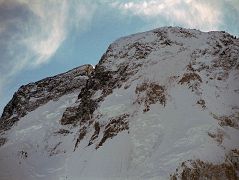





Links To Photo Galleries
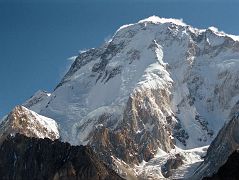





Updated: June 2011. Click on an image to see the FULL size with a caption.
To see the full list of photos, see K2 Photo Gallery.
In 1856 Captain TG Montgomerie, a British army survey officer working in what is now northern Pakistan surveyed a number of peaks in the Karakoram from a distance of about 200km. He catalogued the peaks by number, giving each the prefix K for Karakoram. The first five peaks are now called: K1 Masherbrum, K2 K2, K3 Broad Peak, K4 Gasherbrum II, K5 Gasherbrum I.
British explorer William Martin Conway renamed it Broad Peak in 1892: "There was a fine breadth of mountain splendour displaying itself on the right of our view - a huge Breithorn, as it were, filling the space between K. 2 and the hidden Gasherbrum." - Climbing and exploration in the Karakoram Himalayas By William Martin Conway.
Broad Peak has three separate summits: main summit 8047m, central summit 8016m, and north summit 7550m. There is some controversy whether Broad Peak Central is a mountain to itself or not. Many climbers stop at the fore-summit, less than 20 vertical metres but a long hour or so walk away from the main summit.
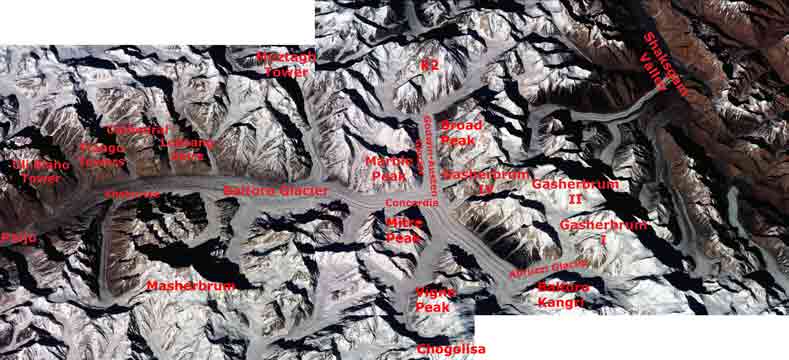
After flying from Islamabad to Skardu with an amazing view of Nanga Parbat, driving from Skardu to Thongol, and trekking from Thongol to Paiju, I set foot on the Baltoro Glacier. I trekked to Khoburtse that first day with a stunning view of Trango Nameless Tower and the Great Trango Tower. I had a dazzling sunrise from Khoburtse with views of Paiju Peak, Uli Biaho Tower, Trango Towers, Cathedral, and Lobsang Spire. The next trekking day we went from Khoburtse to Goro II where Masherbrum was striking both at sunset and sunrise while Gasherbrum IV loomed ahead with Gasherbrum II poking out to its right.
The next day was a fairly short trekking day passing Muztagh Tower before arriving at Concordia, the highlight of the whole trek with K2 dominating the view at the head of the Godwin-Austen Glacier. Rotating in a circle at Concordia, the view has K2, Broad Peak, Gasherbrum IV, Baltoro Kangri, Vigne Peak, Mitre Peak, Paiju Peak, the spires of the Baltoro Glacier, Crystal Peak and Marble Peak. WOW! Spectacular! Breathtaking!
The next day we trekked on the Upper Baltoro Glacier to shagring Camp with views of Chogolisa and Baltoro Kangri. Cloudy weather rolled in as we trekked on the Abruzzi Glacier to Gasherbrum Base Camp with a brief view of Gasherbrum I. After back-tracking to Concordia it snowed, so we decided to return back down the Baltoro Glacier instead of waiting for the weather to clear and the snow to melt.

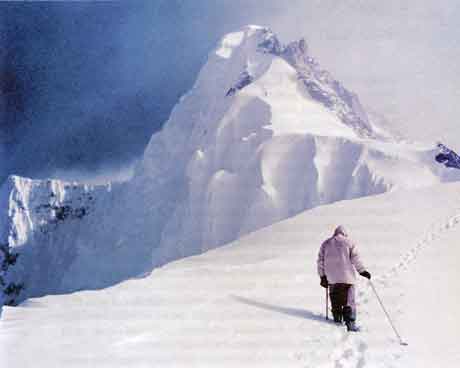
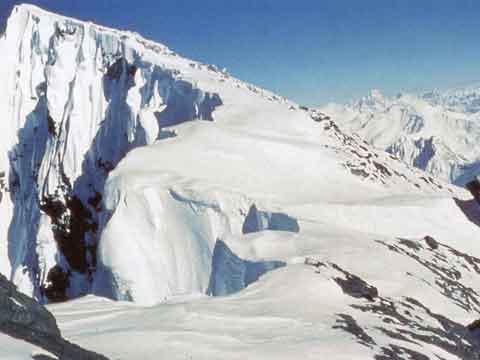
The first ascent of Broad Peak was completed by Marcus Schmuck, Fritz Wintersteller, Kurt Diemberger, and Hermann Buhl on June 9, 1957. This extremely small expedition marked a major step forward in the development of Himalayan climbing.
After a failed attempt by Karl Herligkoffer in 1954, a 4-person Austrian team came back in 1957. Summits and Secrets by Kurt Diemberger: "[Buhl's] plan was that from base camp onwards there would only be climbers on the mountain; they would do everything, load-carrying, establishment of camps and, finally, the assault on the summit. And it was all to be done without the use of oxygen."
They turned back at the fore-summit on their first summit attempt because it was getting late in the day and fog had rolled in. After regrouping at Base Camp, they started their second summit attempt.
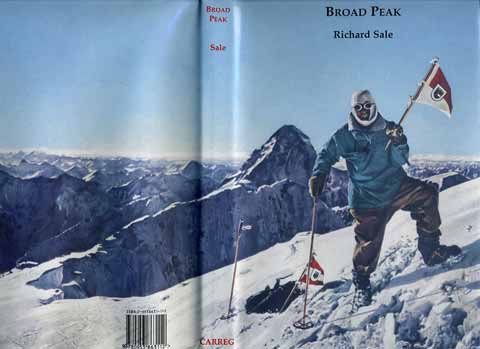


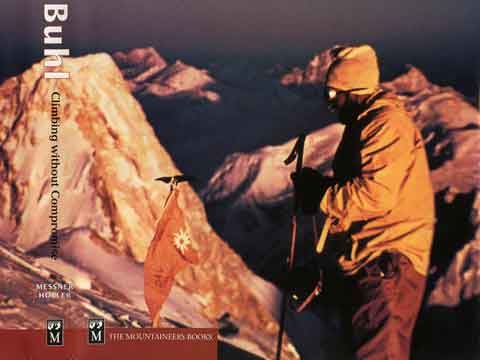
Diemberger reached the summit just as Marcus Schmuck and Fritz Wintersteller started their descent. As Diemberger was descending from the summit he met Buhl still ascending. Summits and Secrets by Kurt Diemberger:
"Slowly, with all that incredible strength of his will, he started to move, very slowly, upwards. ... Two men were standing on a peak, still breathing heavily from the ascent, their limbs weary - but they did not notice it; for the all-enveloping glory of the sun's low light had encompassed them too. Deeper and deeper grew the colours. ... No dream-picture, this. It was real enough, and it happened on the 26,404-foot summit of Broad Peak."
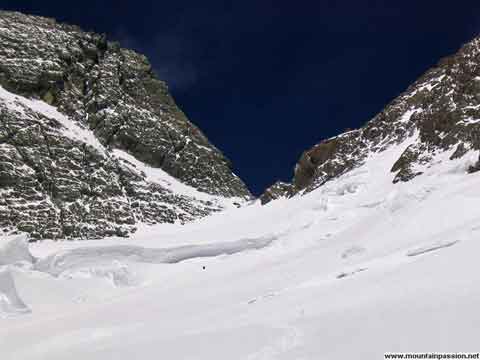
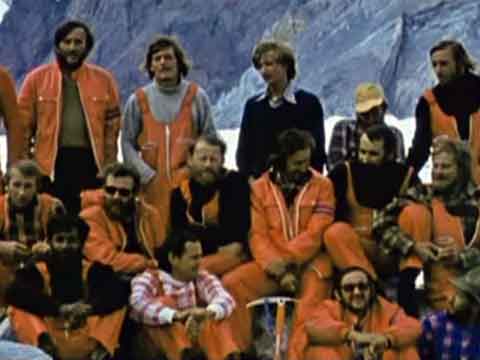
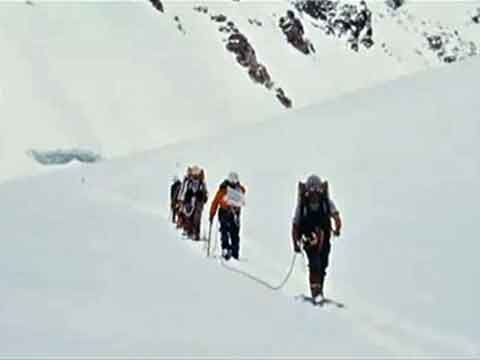
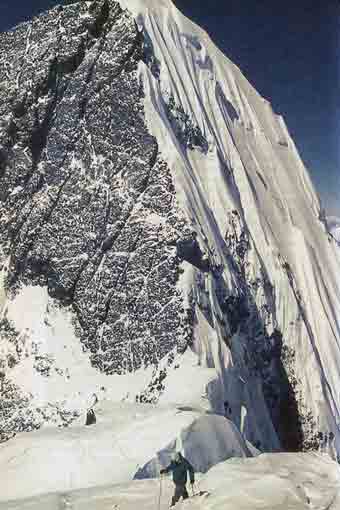
The first ascent of the Broad Peak Central or Middle summit was completed by five Poles on July 28, 1975. The American Alpine Journal, Volume 39:
The route followed the Austrian route of 1957 with some variants, keeping more on the crest of the buttress. On July 28 Roman Bebak, Kazimierz Glazek, Marek Kesicki, Janusz Kulis, Bogdan Nowaczyk and Andrzej Sikorski set off for the summit of the central peak but in the afternoon Bebak withdrew while still below the col between the main and central summits. Right above the col and near the top were two difficult rock steps. At 7:30 P.M. the five other climbers reached the summit of the central peak.
After descending most of the fairly difficult ridge in the dark under worsening weather, they decided to rappel to a snow terrace on the west side, which led back to the col. Nowaczyk was lost when his rappel rope came adrift and plunged down the Chinese side. This was their only rope. During the unroped descent further on the icy slopes Kesicki, Sikorski and Kulis slipped at different times. Kulis managed to arrest himself, but the other two fell to their deaths.
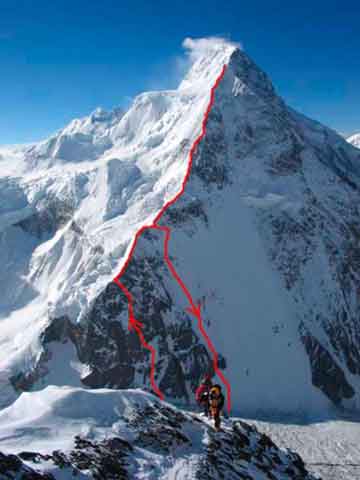
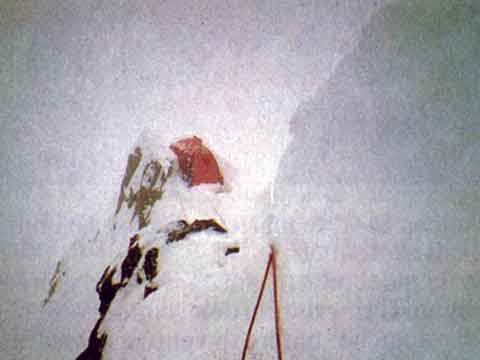

The first ascent of Broad Peak North summit (7550m) was made by Renato Casarotto on June 28, 1983 at 6:10pm after a seven day solo push. After two failed attempts stopped by the bad weather at 6100m and 6350m, the weather improved and Casarotto started again on June 22. The weather turned bad again and for two days he could only gain about 100m. He climbed the 2000m route, overcoming climbing on rock, ice and mixed terrain. After reaching the summit so late in the day he had to bivouac at 7500m with no sleeping bag, staying awake all night before descending the next day.

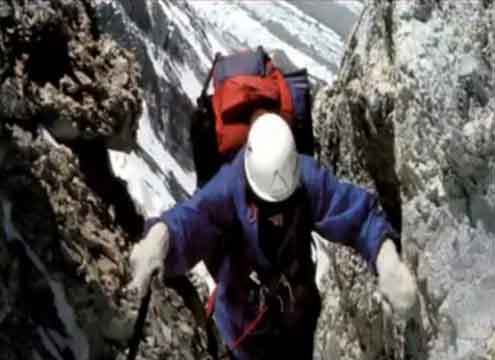
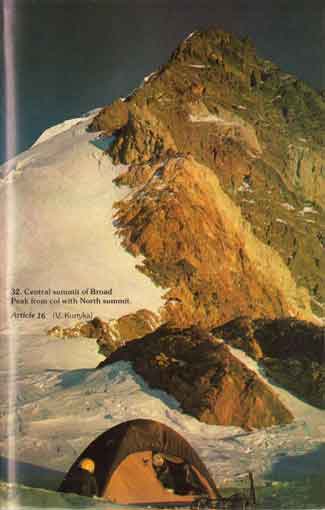
The first traverse of the three Broad Peak summits was completed by Jerzy Kukuczka and Wojciech Kurtyka in just 4 days. They climbed the west ridge to the North summit on July 15, 1984, and continued along the ridge to the Central summit on July 16, 1984. The pair then descended to Broad Col from where they followed the original route over the Forepeak to the main summit on July 17, 1984 and then descended the original route. This was only the second time that both the North and Central summits had been climbed.

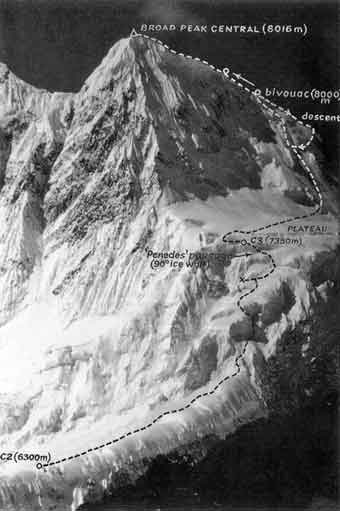
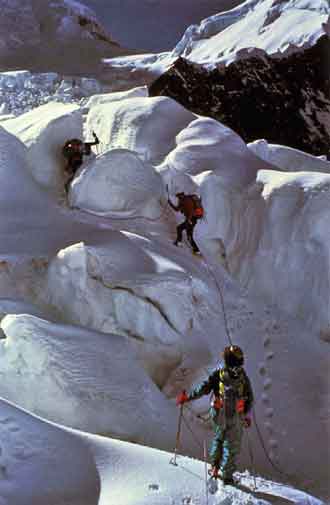

Climbing The World's 14 highest Mountains by Richard Sale and John Cleare: [August 5] 1992 saw the first ascent of a Broad Peak summit from the Chinese (east) side, a Spanish team (including one Italian and the Austrian Kurt Diemberger) climbing a hard line to Broad Peak Central which included 70 degrees ice and short vertical walls in the lower section and 65-70 degrees couloirs higher up. The summit climbers - Spaniards Oscar Cadiach, Enric Dalmau and Lluis Rafols, and the Italian Alberto Soncini - left Camp III, at 7,350m and climbed all day, bivouacking with little equipment at 8,000m, just a few metres from the top. At first light they summitted and returned safely to camp.
Oscar Cadiach in The American Alpine Journal 1993: Like zombies, we got to our feet, plowed through by the cold, and began the first and last steps upwards. Slowly, at the end of a few minutes, we stepped onto the summit. We felt nothing special, or rather, yes, we felt the cold! K2 behind us; the main summit of Broad Peak ahead of us. There we could make out tracks, yesterday's perhaps. The Gasherbrums. We were looking at them with our own eyes . . . . and from the summit! Finally! It was incredible. Before calling on the radio, I huddled to protect myself from the wind and to catch my breath. Down there, our companions were jubilant; up here an embrace meant it all!
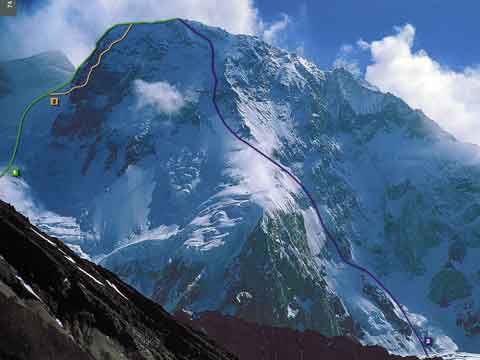
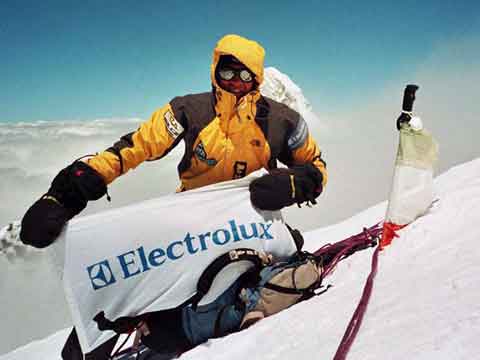
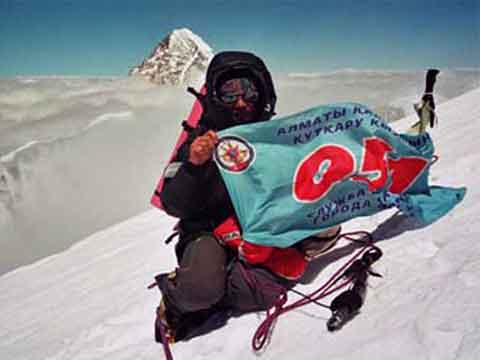
The first ascent of the 2300m vertical sheer rock and ice Southwest face of Broad Peak was completed by the Kazakhs, Serguey Samoilov and Denis Urubko on July 25, 2005 at 11:30am without supplementary O2, and no previously fixed ropes, gear caches or camps. They left base camp on July 18 in great weather and had to bivouac each night in their tent, but, except for two nights, only had room enough to sit and wait for the morning light. The weather got worse with each day until the fifth day when they awoke at 7000m to bad weather and snow, which increased the avalanche danger. In the upper sections the rock was smooth, washed away by avalanches through the centuries.
When they reached a tiny flat place at 7800m, there was only enough room for one to lie down at a time. In the morning a heavy wind swept away the clouds with thick fog covering the mountains below 7500m. The wind grew powerful as they reached the summit on July 25th. The weather worsened as they descended the normal route, forcing the thirsty and exhausted Kazakhs to bivouac once again at 7200m.